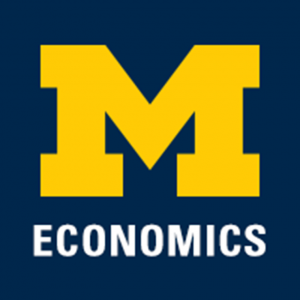Presented By: Department of Economics
Applied Microeconomics/IO Seminar: The Equilibrium Effects of Public Provision in Education Markets: Evidence from a Public School Expansion Policy
Michael Dinerstein, University of Chicago

Abstract:
In a variety of markets with private options, the optimal level of public provision may require balancing a tradeoff between reducing private options’ market power with the possibility of crowding out potentially high-quality products. These considerations are particularly relevant in many developing countries’ education systems where private schools capture high market shares while public schools are overcrowded. We study the equilibrium effects of public provision in the context of a large expansion of public schools in the Dominican Republic. Over a five-year period, the government aimed to increase the number of public school classrooms by 78%. Using an event study framework, we estimate the effect of a new public school on neighborhood outcomes and competing private schools, where we instrument for how quickly the public school construction project finished with whether the procurement lottery randomly assigned the project to a firm or an unaffiliated individual. We find that a new public increased neighborhood students’ test scores, both in the public and private sectors. As public enrollment increased, a large number of private schools closed while the surviving schools lowered prices and increased investment in school quality. To study how the provision of high quality schools varies with the level of public provision, and to compare the effects to the alternative policy of public financing, we specify an empirical model of demand (students choosing schools) and supply (schools choosing whether to stay open, how much to invest in quality, and what price to charge).
In a variety of markets with private options, the optimal level of public provision may require balancing a tradeoff between reducing private options’ market power with the possibility of crowding out potentially high-quality products. These considerations are particularly relevant in many developing countries’ education systems where private schools capture high market shares while public schools are overcrowded. We study the equilibrium effects of public provision in the context of a large expansion of public schools in the Dominican Republic. Over a five-year period, the government aimed to increase the number of public school classrooms by 78%. Using an event study framework, we estimate the effect of a new public school on neighborhood outcomes and competing private schools, where we instrument for how quickly the public school construction project finished with whether the procurement lottery randomly assigned the project to a firm or an unaffiliated individual. We find that a new public increased neighborhood students’ test scores, both in the public and private sectors. As public enrollment increased, a large number of private schools closed while the surviving schools lowered prices and increased investment in school quality. To study how the provision of high quality schools varies with the level of public provision, and to compare the effects to the alternative policy of public financing, we specify an empirical model of demand (students choosing schools) and supply (schools choosing whether to stay open, how much to invest in quality, and what price to charge).